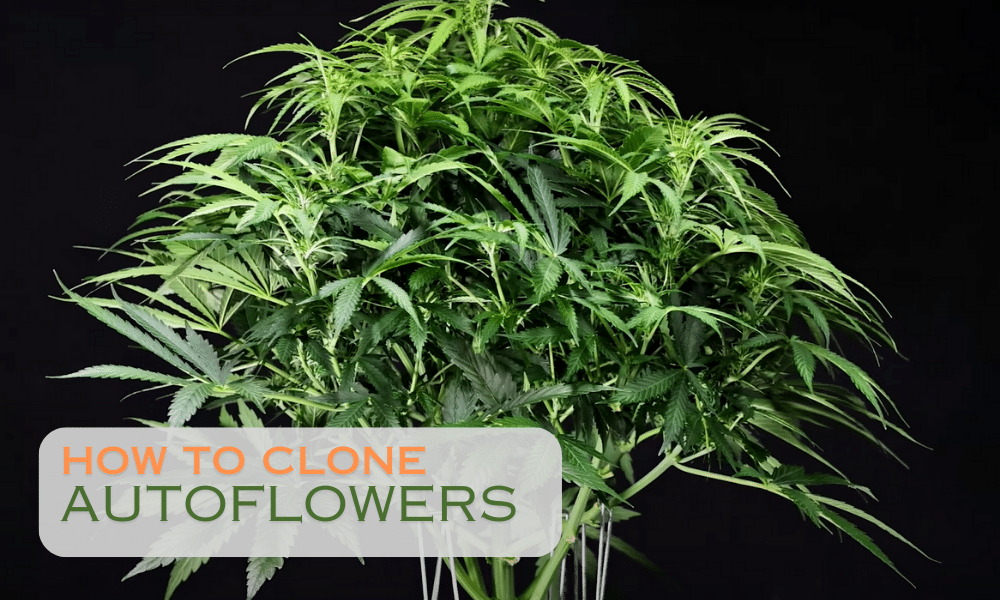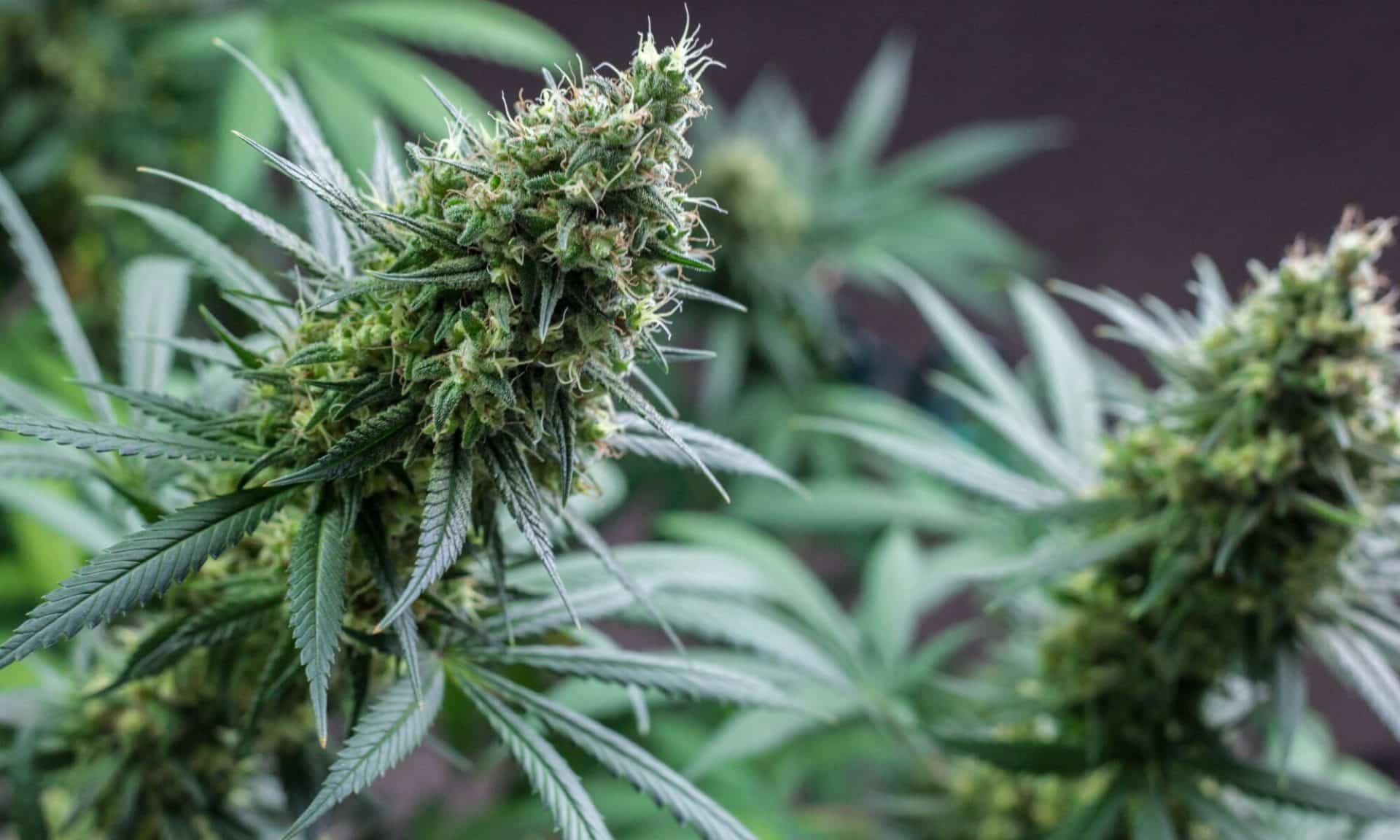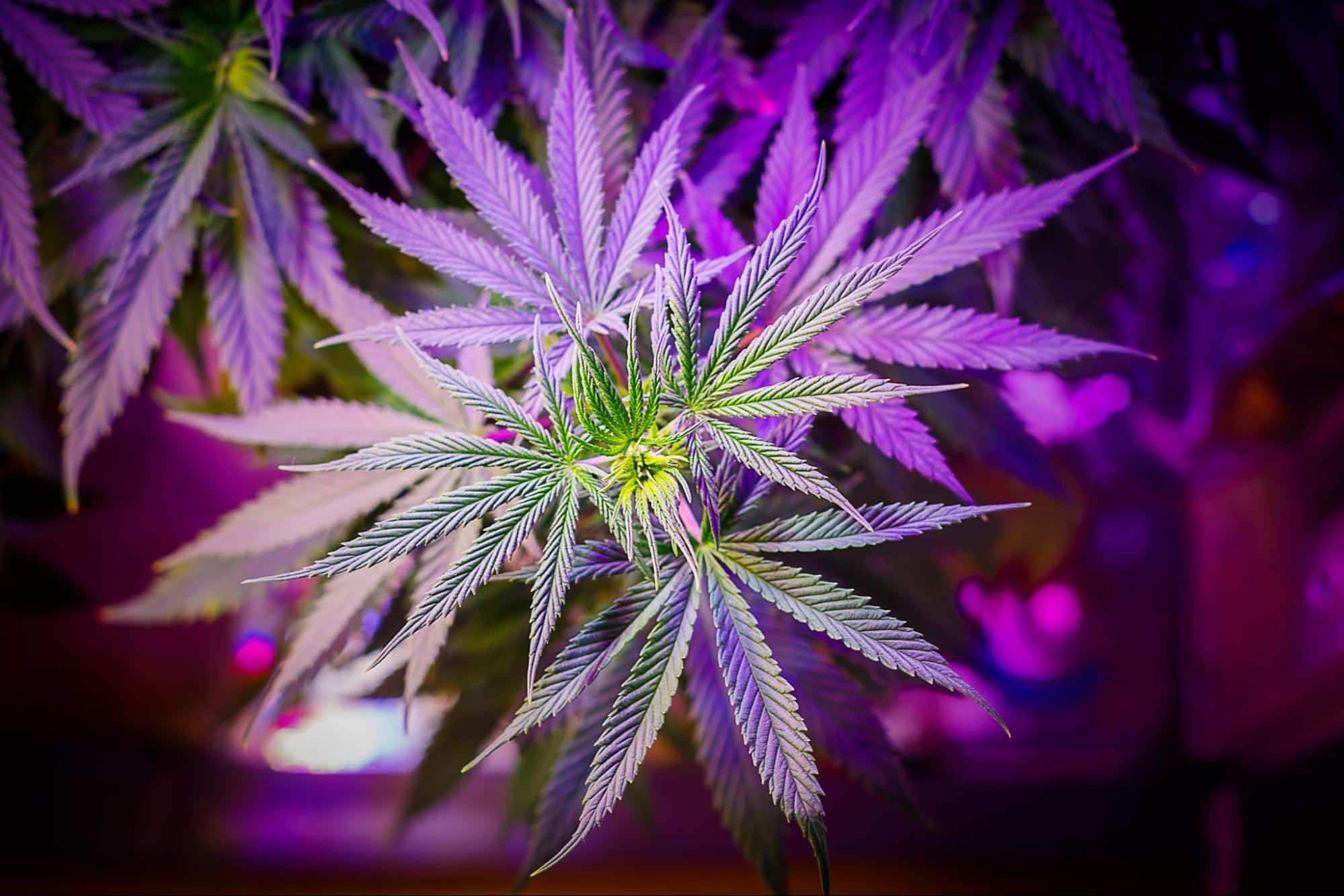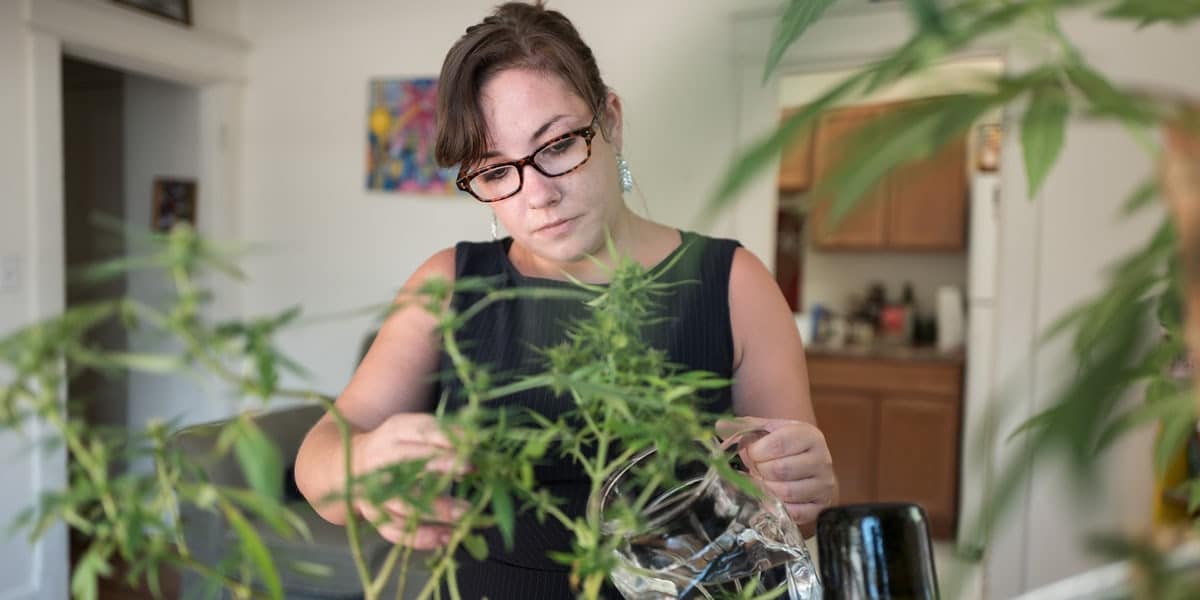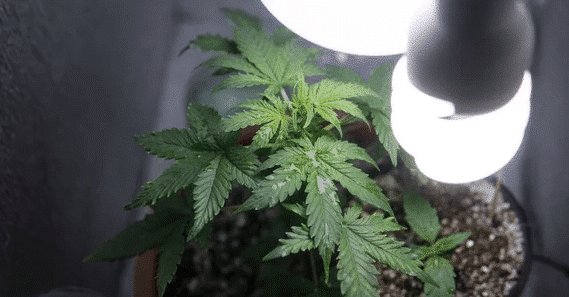No products in the cart.
Marijuana Education
Cloning autoflowers: Good or Bad Idea?
Cloning autoflowers might have some advantages. But do they outweigh its challenges?
Sure, you can clone autoflowers. Cloning autoflowers might have some advantages. But, considering its entirety, is cloning autoflowers really worth your while?
In this article, we explore some reasons why cloning cannabis is a super idea but probably not the best one for autoflowers. We also consider alternatives to cloning autoflowers that can help maximize your autoflower yields.
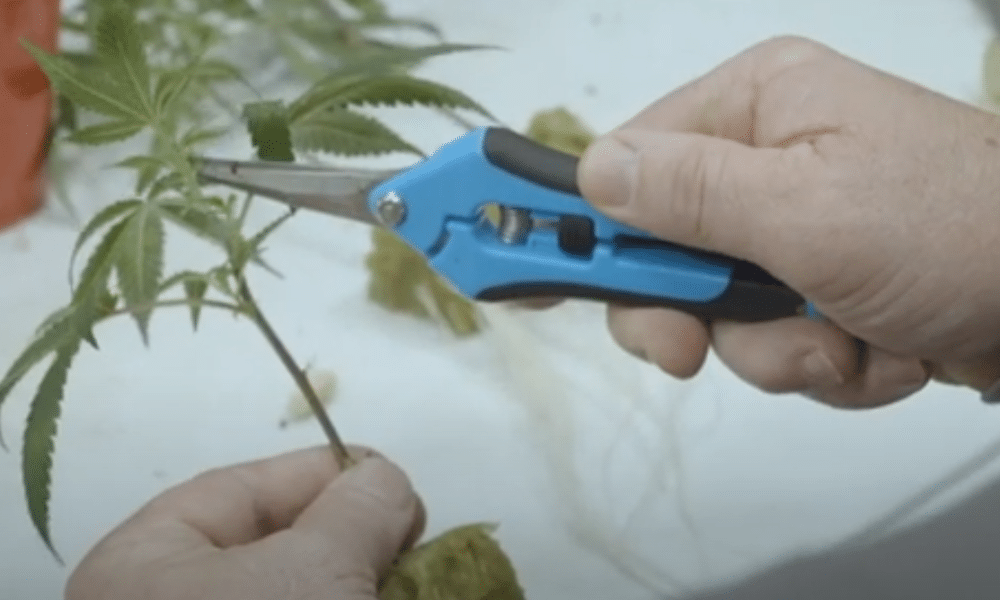
The Idea Behind Cannabis Cloning
Cannabis cloning is an easy DIY method for getting your favorite cannabis cultivar over and over again. It is an excellent alternative to buying cannabis seeds, especially when it comes to high-value cultivars like Cannabis Caviar or Loud Dream.
With how common cannabis cloning has become, there is probably not one grower who doesn’t already know how to clone cannabis or isn’t on their way to learning how to clone cannabis. But beyond the basic reasons of saving money and replicating your favorite cultivars, here are a few extra reasons why you might need to clone cannabis:
- To be certain of your cannabis gender and traits: Because cannabis clones are a replica of their parent plant, you can be certain they will mirror the gender and traits of their parent plant.
- To get more yields faster: Cannabis clones are already partly developed plants. They only need a little extra time to root and grow bigger and they will be well on their way to giving you your desired yields.
As a result, cannabis cloning is a delightful choice for regular cannabis strains that can afford a little extra time. But, for the quick-growing autoflowers? Cannabis cloning might not be the best choice.
Can Autoflowers Be Cloned?
Yes, you can clone autoflowers. However, not many growers would choose cloning autoflowers over buying autoflowering seeds.
Why? Because autoflowers grow based on their genetic time clock and not environmental factors, you cannot extend their vegetative phase.
Autoflowers do not need light to flower. 18/6 light cycle or not, they will move into flowering when their genetic time clock says so. As a result, it is practically impossible to provide the extra time a clone needs to root, grow bigger, and still produce great yields with autoflowers.
Take this scenario for example: You take a cutting from a 4-week-old autoflower. Naturally, the resultant clone is expected to also be 4-weeks old.
The new autoflower clone needs a few days to a week or so to establish its root system before it starts building itself. Add that to its starting age and your autoflower should be in its pre-flowering stage, experiencing explosive vegetative growth. Unfortunately, at the moment, your autoflower clone is focusing on root development.
By the end of week 5 or 6 when your autoflower clone should at least try to grow a bit bigger to increase its chances of significant yields, it has to start flowering because its genetic time clock says so.
Thus, your autoflower clone goes into flowering without the vegetative size or structure it needs to give big blooms at harvest time.
Another reason why not many growers are keen on cloning autoflowers is the risk of stressing the parent plant beyond repair.
Any kind of cutting, even with the best intentions, is stressful for your plants. Even defoliating autoflowers has to be done at the right time or you’d risk throwing them for a loop; let alone making a full branch cut for an autoflower clone.
Stressing your autoflower parent plant will cause them to pause development to enable them to recover properly. But remember, autoflowers do not take breaks with their growth cycle progression, even when you make them pause development.
So, when you clone autoflowers, you not only risk getting subpar yields from the new autoflower clones, you also risk jeopardizing the beautiful autoflower yields you could have had from the parent plant.
Can autoflowers be cloned? Absolutely! But, cloning autoflowers is fraught with several challenges that should make any intentional grower a bit uncomfortable.
The Challenges Around Growing Autoflowers from Clones
It’s like when you think you’ve known all that could go wrong with cloning autoflowers, you find out there are even more challenges around growing autoflowers from clones. Cloning autoflowers is a never-ending risk.
Autoflowers are popular for not playing by the rules, and it’s not just in the good way of their quick flowering times. Autoflowers can be very unpredictable; with their genetic expressions, flowering times, yields, etc.
On a recent community discussion, more than a few cannabis growers agreed to prefer growing photoperiod cultivars over autos because there is more certainty with photoperiod clones than with autoflowering clones.
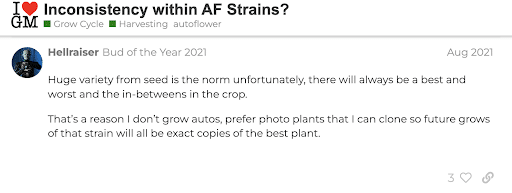
Another challenge around growing autoflowers from clones is the pristine care it requires.
Autoflowers are stress-sensitive cultivars. So, if you are still finding your feet with this delicate cultivar, you do not have to explore cloning autoflowers just yet.
The cloning process itself is stressful enough; add autoflowers to the mix, and you just might have a recipe for potential disaster.
Is It A Good or Bad Idea?
Sure, cloning autoflowers is a fun experiment. The curiosity to see what happens when you clone your favorite autoflower cultivar can be really exciting!
But, if your primary goal is to get a big autoflower harvest, you have better chances with buying reliable autoflower seed genetics than with cloning autoflowers.
Autoflower yields aren’t always the best in the room. They are usually small with unpredictable yields, which might make you want to explore what is possible with cloning autoflowers.
However, there are other methods that can help you get bigger yields from your autoflowers and even multiple harvests from a single autoflower without the risks of cloning.
Here are some of the best-used techniques for getting big yields from autoflower–bud size and quantity:
Low-Stress Training for Autoflowers
Low-stress training is an excellent option for increasing autoflower yields with minimal risk. Its methods are easy, cost-effective, and have a relatively high success rate. Some popular low-stress training methods to explore as alternatives to cloning autoflowers include:
- Sea of Green (SoG): This method involves growing many small autoflower plants in a pot to maximize light exposure, space, and resource distribution.
- Tie-Down: This technique involves gently bending and tying down the branches of your autoflower plant to expose more bud sites to the needed resources.
- Screen of Green (ScrOG): This method involves weaving the branches of your autoflower through a screen to spread out the canopy and ensure all parts of your autoflower receive adequate care and nurturing.
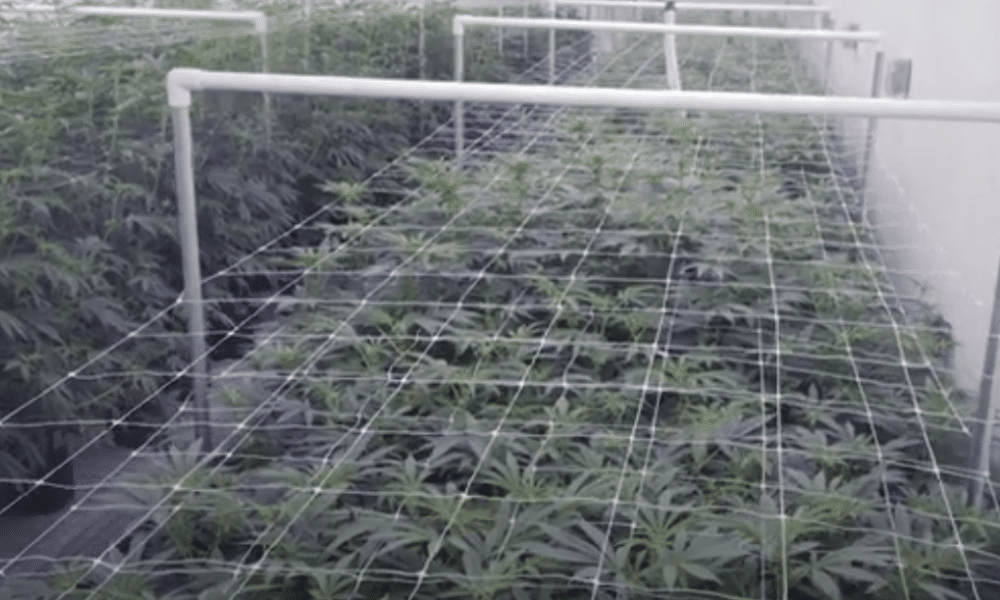
Perpetual or Progressive Harvesting for Autoflowers
When you know how to perform perpetual or progressive harvesting, you’d realize autoflowers do not have to be one-and-done plants. Perpetual or progressive harvesting allows you to harvest matured buds first and give the less mature ones more time and energy to ripen. This way, you can harvest your autos more than once and ensure you are maximizing your plant’s potential with each harvest.
Choosing Fast-Flowering Strains
Why gamble with cloning autoflowers, when you can get more consistent results with fast-flowering strains? Fast flowering strains allow you to get your autoflower harvests in as little as 7 weeks. Thus, you can choose to breed these strains to get autoflower seeds or have several planting and harvest cycles in one growing season.
Some of our top fast-flowering autoflower seed strains include:
Do You Still Want to Clone Autos? Here Are Some Recommendations
Cloning autoflowers isn’t an idea we’d back for now. However, since some growers claim success with cloning autoflowers, we’ve gathered a few recommendations on how to clone autos with success from these growers:
- Make cuttings from lower branches. Autoflowers receive age signals from top to bottom. So, taking cuttings from branches early enough might enable you to get a clone younger than it’s parent plant; a clone that has more time to grow after rooting and before flowering.
- Maintain cuttings in the right environment. Keep your cuttings and parent plant in humid conditions under gentle lighting to minimize the amount of stress they face. Both parent plant and clone need a stable, ideally-conditioned environment to thrive.
- Use sharp sterile tools. Ensure all tools are sharp and sterile to avoid damaging delicate tissues or infecting the parent plant or your new autoflower clone.
- Handle all processes gently. Be gentle throughout when cloning autoflowers to avoid overly stressing both the parent plant and clone.
We also found a grower’s journal on how they successfully cloned a Purple Punch Auto (or possibly Mimosa; they weren’t exactly sure). Check it out:
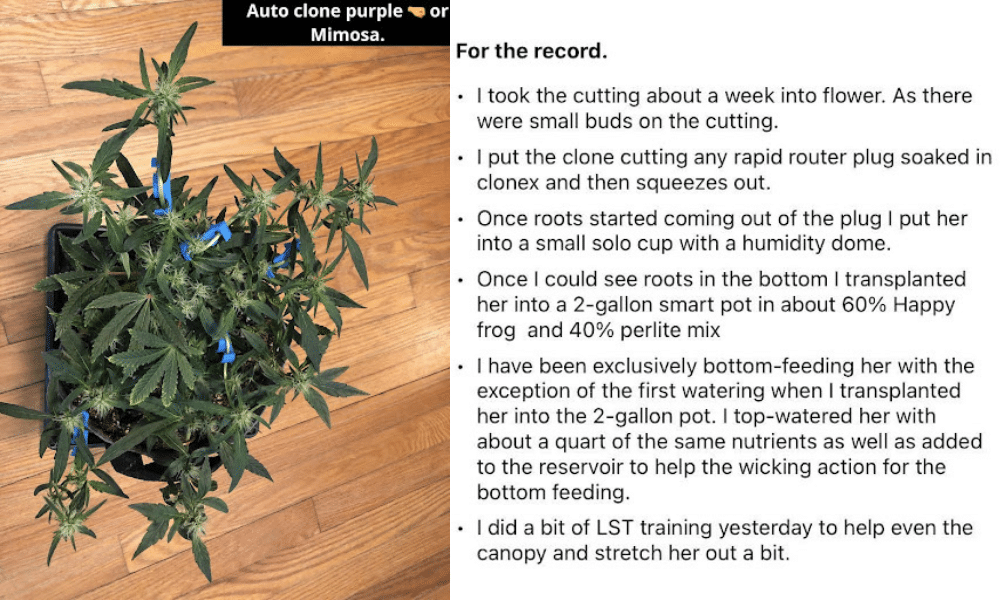
So, if you still really want to clone autoflowers, here’s what we would recommend based on the data and reports we found:
Step-by-Step Guide to Cloning Autoflowers
- Make cutting at the Right Vegetative Window:
Take cuttings early in the vegetative phase to give the clone time to root and grow, but not too early to avoid stunting the parent plant.
- Choose Only Healthy Branches:
Go for the healthy branches with several nodes and bright green (not yellow) leaves. If you spot too many yellow leaves on your auto, do not clone. Fix the issues behind your autoflower having that many yellow leaves FIRST.
- Prepare Your Tools:
Get your sharp, sterile scissors, shears, or razor blades set. Ensure your workspace is clean and have a humidity dome or plastic cover ready to maintain high humidity. A good-quality rooting hormone or gel can help your new autoflower clones establish healthy roots up to 50% faster.
- Take and Prepare Cuttings:
Make a clean cut on a 4 to 6-inch long branch just below a node. Completely take out the lower leaves like you’re lollipopping to reduce evaporation, and make a diagonal cut at the base to increase the surface area for rooting.
- Dip in Rooting Hormone:
Dip the cut end of the clone into a rooting hormone or gel to promote root growth.
- Plant the Cutting:
Insert the cutting into a moist, fertile growth medium.
- Maintain High Humidity:
Place the new autoflower clone under a humidity dome or plastic cover to keep them in high humidity conditions (between 80 and 90%). Mist your clone regularly to keep the leaves from drying out.
- Provide Adequate Light:
Use a gentle light source, such as fluorescent or LED, with an 18/6 light cycle to encourage vegetative development. Autoflowers may not need light to grow, but they need light for the best vegetative growth.
- Monitor and Wait for Roots:
Keep optimal growing conditions and wait for the roots to develop, which usually takes about 7 days.
- Transplant and Care for Your New Autoflower Clone:
Once the roots are out, move your new autoflower clone to its final pot. Choose the right pot size because autoflowers do not enjoy transplanting and your pot size affects yields. Adjust growing conditions as needed throughout the autoflower life cycle.
Progressive Harvesting and Fast-Flowering Autoflowering Strains—Great Alternatives to Cloning
Can you clone autoflowers? Yes. Do we advise cloning autoflowers? Probably not.
Cloning autoflowers comes with too many challenges. What starts as a hopeful attempt to boost yields can quickly turn into a disaster if the parent plant gets stressed beyond recovery.
So, what are the alternatives to cloning autoflowering seeds? We recommend progressive harvesting and choosing fast-flowering Autoflowering strains like these:
- Dwarf Low Flyer Autoflower
Dwarf Low Flyer Autoflower is an Indica-dominant strain with a THC level between 16 and 20% and mild (<1%) CBD content. This autoflower seed goes from seed to harvest in 7 to 9 weeks and can produce up to 350 grams per plant outdoors and 250 grams per square meter indoors.
- Hindu Kush Auto
Hindu Kush Auto is another indica-dominant strain with THC levels between 15 and 20% and a mild CBD level (typically below 1%). Rated by High Times as one of the best 25 cannabis strains of all time, this autoflowering cannabis reaches harvest in about 6 or 8 weeks, yielding 30 to 100 grams per plant outdoors and 350 to 500 grams per square meter indoors.
- Blue Amnesia
Blue Amnesia is a sativa-dominant strain with THC levels around 15—20% and mild to zero CBD content. This autoflower seed goes from seed to harvest in about 8 or 10 weeks with a maximum autoflower yield of about 100 grams per square meter indoors and about 200 grams per plant outdoors.
FAQ section
Is it possible to breed autoflower plants?
Yes, you can breed autoflowers. Female autoflowers produce seeds when fertilized with pollen.
How many times can you harvest autoflower?
You can harvest most autoflowers only twice due to their short life cycle.
Can an autoflower be a mother plant?
Yes, an autoflower can technically be a mother plant. However, we do not recommend cloning autoflowers due to the associated challenges.
Can I clone super autoflowers?
Yes, you can clone super autoflowers. These high-yielding cultivars might even have a higher success rate for cloning. Still, we advise caution when cloning any autoflower.
Can a clone be a mother plant?
Yes, a clone can serve as a mother plant. But, there are rules to cloning a clone and using a clone as a mother plant.


